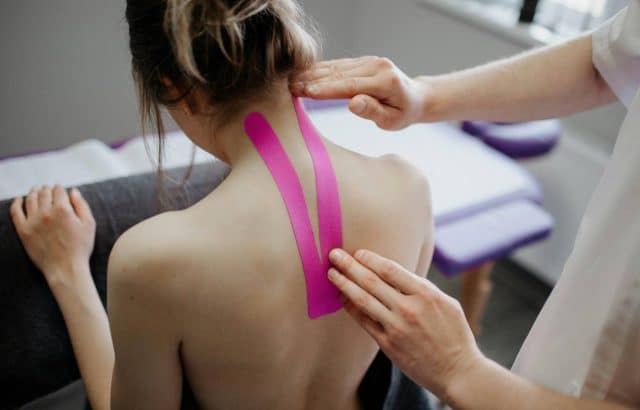ADHD is not just a condition found in children; it affects adults too. This article sheds light on everything you need to know about this neurodevelopmental disorder: from what it is, its causes, signs, and symptoms, along with crucial statistics specific to the UK. Read on.
What Is ADHD?
ADHD, or Attention Deficit Hyperactivity Disorder, is a neurodevelopmental disorder that affects both children and adults. It’s characterized by persistent patterns of impulsivity, inattention, and hyperactivity that can affect social interactions and daily functioning. Adults who have this disorder typically experience difficulty managing time, organizing themselves and activities, and maintaining focus. As a result, it significantly disrupts various aspects of an individual’s life, including work productivity, academic performance, and relationships.
The challenges associated with ADHD can lead to low self-esteem, feelings of frustration, and partial or complete lack of confidence in one’s abilities. Sometimes the impact of these challenges goes beyond the person living with it, affecting their colleagues, friends, and family members who may not fully understand the disorder or know how to provide appropriate support. Misconceptions about the condition often lead to stigma and feelings of isolation which tends to worsen the challenges faced by those who have it.
ADHD is a serious medical condition that requires proper understanding and appropriate management to help those living with it to lead fulfilling lives.
ADHD Causes
The exact cause of ADHD is not yet fully understood, but scientists believe a combination of factors leads to it. These factors can be categorized into neurological, genetic, and environmental factors [1].
Genetic factors: Research has shown that ADHD tends to run in families; this suggests that genetic factors contribute to the risk of developing it. Studies have revealed that it is prevalent in individuals whose one, or both parents have it, with this being the cause in every 3 out of 4 cases. Twin studies also suggest that the disorder is inheritable. According to the data, children who have identical twins living with ADHD have a high likelihood of od also developing it [2][3]. Despite these findings, it’s worth noting that genetics alone do not determine whether someone will develop the disorder. An interaction between genetic factors with environmental factors increases the risk of ADHD.
Environmental factors: Prenatal and early-life exposures, such as a mother smoking, consuming alcohol, or being exposed to toxins like lead, have been linked to an increased risk of this neurodevelopmental disorder. Stress during pregnancy or birth complications like premature or low-weight birth may also play a role. What’s more, the condition has also been noticed to affect kids who face abuse, neglect, or violence. This is because these experiences can affect how the brain develops and cause attention and behavior problems.
Environmental factors: Brain differences are also linked to the condition. Brain scans show that certain parts of the brain work differently in people living with it. These are the parts of the brain that control planning, impulse control, and attention. What’s more, differences in the levels of certain brain chemicals, including dopamine and norepinephrine are also suspected causes. These chemicals help with motivation, mood, and attention, and if their levels are off, it could manifest as ADHD symptoms.
Other factors that may be behind the disorder include poor nutrition and differences in the size of certain areas of the brain involved in executive function, impulse control, and attention. It’s worth noting that research into the exact causes of ADHD is ongoing, and new findings continue to emerge.
Signs and Symptoms of ADHD in Adults
The signs and symptoms of ADHD in adults often affect adults in a way different from how it affects children, making it challenging to recognize. The symptoms may also vary depending on the type of ADHD an individual has — whether it is inattentive, hyperactive-impulsive, or combined type. The common signs and symptoms associated with the inattention type of the disorder include [4]:
- easily distracted: They may get easily sidetracked and find it challenging to stay focused on a single task until complete;
- difficulty in organizing tasks: Adults with the disorder often struggle to set priorities, manage tasks, and meet deadlines;
- avoidance of tasks: They tend to avoid and procrastinate, especially when it involves tasks that require sustained mental effort;
- forgetfulness: They tend to forget daily activities such as keeping appointments, paying bills, or returning calls.
What’s more, individuals with this subtype of the neurodevelopmental disorder often find it challenging to follow directions. They process information more slowly and less accurately compared to others, which can lead to difficulties at work and school.
Some of the signs and symptoms people with the hyperactive-impulsive type of ADHD often experience include:
- restlessness: Adults with ADHD often feel restless and may have trouble sitting still for long periods;
- difficulty in managing emotions: They tend to display quick outbursts of anger, quick temper, and difficulty in managing stress;
- impulsivity: They tend to make hasty decisions, engage in risky behaviors without considering the consequences, and act without thinking;
- impatient: Adults who suffer from this type find it difficult to wait their turn or wait in line. They also often speak out of turn or interrupt others.
People with the combined type of this disorder may experience symptoms associated with both the hyperactive-impulsive and inattentive types of ADHD. They often struggle with restlessness, and difficulty concentrating, making it hard to complete tasks and follow through with commitments.
At this point, it’s worth noting that the symptoms of ADHD in female patients typically manifest differently than in men. Women with the condition tend to be more disorganized, forgetful, and less hyperactive. They also tend to experience more mood swings and a feeling of low self-esteem.
Many adults living with ADHD do not know they have it, and so go untreated. This is because the symptoms are easily mistaken for anxiety, mood disorders, or personality traits. It’s worth noting that undiagnosed ADHD left untreated can negatively impact one’s daily life, hurting their relationships, and overall quality of life [5][6].
ADHD Statistics in UK Adults
ADHD in adults UK statistics show that the condition affects approximately 5% of children, and 3-4% of adults in the country, with a male-to-female ratio of around 3:1. It is estimated that about 1 million women in the UK suffer from ADHD, and of this number, only about 75,000 access health care. According to Lancet and NICE, approximately 694,000 children, and 1.9 million adults have ADHD, making it a total of 2.6 million individuals. However, due to underdiagnosis or misdiagnosis, the actual prevalence rate could be higher [7].
In the past, it was commonly believed that UK children with ADHD could outgrow their symptoms, feeling entirely OK by the time they reach adolescence. However, this has been found to be slightly out of tune with the realities on the ground, as an estimated 60% to 65% of adults who had the disorder as children continue to experience its associated symptoms into adulthood. Recognizing the prevalence of the disorder, the NHS categorized ADHD as a “condition” in 2009, allowing everyone to seek diagnosis through the NHS. However, to access this treatment, patients first need to see a general practitioner (GP) [8].
Diagnosis of ADHD in Adults in the UK
The diagnosis of ADHD in adults in the UK typically involves a comprehensive process that considers various factors, including symptoms, and medical history. Doctors typically aim to identify the disorder and rule out anxiety, among other conditions that cause symptoms similar to those associated with ADHD. If you’re wondering how to get diagnosed with ADHD in adults UK, there are several pathways, and each one has its own pros, challenges, and criteria. The pathways include [9]:
NHS Assessment
Adults suspecting they may have ADHD can approach their GP for an initial assessment to determine if their symptoms check out. The GP may then refer the individual to specialists for a more comprehensive assessment. Specialists typically ask questions about the patient’s current symptoms, and whether they have been present since their childhood or not. It’s worth noting that the diagnosis is only confirmed from all the testing if the signs and symptoms have been present since childhood.
In a situation where the individual does not remember details about their childhood experiences, the specialist may request to talk to their parents, teachers, or anyone who spent time with them as a child. Sometimes, specialists may also request to see an old school record to make deductions. If it turns out the symptoms didn’t occur regularly during childhood, the individual is considered to be free of the disorder.
However, if the symptoms have been present since childhood, specialists further ask questions to determine how the reported symptoms may be impacting different aspects of the patients’ lives. Are they struggling at work, with making and keeping friends, or having difficulties in their relationships? If the answer to these questions is yes, then a diagnosis of ADHD becomes more likely [10]. Once diagnosed during the test phase, the specialist may recommend treatment plans tailored to the individual’s needs.
Right to Choose (NHS England)
The Right to Choose initiative allows patients in England to choose their healthcare provider for certain services, including ADHD diagnosis and treatment. This enables individuals to access specialist services that may offer shorter waiting times or specific expertise in adult ADHD. So, for instance, if a patient feels that the waiting time to get an assessment is too long, they have the right to choose an alternative provider, including NHS or private providers.
Private Diagnosis
Adults can opt for a private assessment and diagnosis service, even without a referral from a GP. While this approach typically has shorter waiting times and flexible appointment options, it can be costly as it is seldom covered by insurance or healthcare plans. However, it makes a great option for individuals interested in fast-tracking assessment, diagnosis, and treatment.
It’s important to consider preferences, and the advantages and challenges involved when choosing the most suitable approach for diagnosis.
Treatment of ADHD in Adults
ADHD cannot be completely cured; the treatment in adults only helps manage the symptoms effectively, enhance daily functioning, and improve the overall quality of life. The approach to treatment typically involves a combination of medication, and psychotherapy, tailored to the patient’s needs. Here’s an overview of the main treatment options available in the UK [10]:
Medications
Stimulant and non-stimulant medications are commonly employed to manage the condition in adults. Non-stimulant medications such as Strattera (atomoxetine), are approved for treating ADHD in adults. It works by increasing norepinephrine levels in the brain and can be an alternative for those who don’t respond well to stimulant medications or have concerns about their side effects.
On the other hand, stimulant medications like Ritalin (methylphenidate), Elvanse (lisdexamfetamine), guanfacine, and dexamfetamine, are commonly prescribed to help manage the associated symptoms. Modafinil is another medication commonly prescribed off-label to handle the condition. These medications help improve attention, impulse control and focus by increasing the levels of dopamine in the brain. You can buy Modalert online in the UK, and it’ll be shipped directly to your doorstep — if quick delivery, is something you are interested in.
Psychotherapy
This treatment approach generally involves discussing the condition and its effects with a specialist. Its main aim is to help people living with it to make sense of the diagnosis, cope, and live with the condition. Cognitive behavioral therapy (CBT) is a type of therapy that helps individuals develop coping strategies, address emotional and behavioral challenges, and improve organizational skills. This treatment approach proves really effective when also managing low self-esteem, depression, and anxiety often experienced by Adults with ADHD.
Where Can UK Adults with ADHD Go for Help and Support?
Managing ADHD can be quite challenging, especially when done alone. Interestingly, there are various resources and organizations in the UK, established to help provide guidance, support, and treatment for individuals living with ADHD. Here is a list of some of the main resources and organizations available to help [11]:
- ADDISS: ADDISS is an acronym for The Attention Deficit Disorder Information and Support Service. It is a national charity that provides information, resources, and support for individuals with ADHD, including their families, and professionals. It offers helplines, training programs, and workshops to help manage ADHD symptoms effectively;
- Support Groups from AADD-UK: AADD-UK, is the UK chapter of Action on Adult ADHD. It is a user-led organization that provides advocacy, support, and awareness for adults with ADHD in the UK. They offer support groups, online forums, and information on diagnosis and treatment options for adults with ADHD;
- The ADHD Foundation: The ADHD Foundation is a leading charity dedicated to supporting individuals with ADHD, their families, and professionals. They provide a range of services, including diagnostic assessments, support groups, and training programs for adults who have this disorder within the UK;
- The UK Adult ADHD Network (UKAAN): UKAAN is a network of healthcare professionals, patient reps., and researchers who are committed to furthering what is known about ADHD, from its causes to diagnosis, and how to manage it in adults. It offers research updates, educational resources, and networking opportunities for individuals and professionals who have the disorder;
- The UK ADHD Partnership (UKAP): UKAP is a coalition of organizations and professionals dedicated to improving the lives of individuals living with ADHD in the UK. It provides resources, guidance, and support for these individuals, including their families, and professionals working in the field;
- NHS Services: The NHS offers a range of services for individuals with the disorder, including diagnostic assessments, psychological therapies, and medication management. You can speak to your GP or healthcare professional for a referral to specialist ADHD services within the NHS – if it’s an approach to diagnosis and treatment you’re interested in;
- The UK’s Adult ADHD Charity ADHDadultUK: ADHDadultUK is a charity dedicated to providing advocacy, information, and support for adults living with the disorder in the UK. It offers online resources, a helpline, and support groups to help tackle the associated symptoms and improve their quality of life.
Whether you’re looking for information, treatment options, or support, the above-listed organizations offer to help those living with the condition to lead fulfilling and productive lives.
ADHD Self-Help Tips
Living with ADHD can be challenging, but there are several self-help strategies that can help improve the quality of life for adults with the condition. Here are some actionable self-help tips:
1.Time management:
- develop a daily routine and stick to it. Use calendars, planners, or smartphone apps to schedule tasks and reminders;
- break tasks into smaller, manageable steps to avoid feeling overwhelmed;
- prioritize tasks based on importance and deadlines to stay focused and organized.
2. Sleep hygiene:
- maintain a regular sleep schedule by going to bed and waking up at the same time every day, even on weekends — if possible;
- create a relaxing bedtime routine to get your body to start winding down once it is close to your bedtime;
- avoid nicotine, caffeine, and screens (smartphone, computer, TV) 30 minutes to 1 hour before bedtime to improve the quality of your sleep.
3. Tune out distractions at work:
- create a distraction-free workspace by minimizing clutter and keeping only important items within reach;
- use noise-canceling headphones or background music to drown out distractions and improve focus;
- break tasks into short, focused periods using the Pomodoro Technique (25 minutes of work followed by a 5-minute break) to maintain concentration.
4. Organization tools:
- use organization tools such as storage bins, filing systems, and labels to keep your living and work spaces organized;
- make use of digital tools and apps (e.g., Asana, Trello, and Evernote) to manage tasks, projects, and deadlines efficiently.
5. Exercise and eat healthfully:
- engage in regular physical activity such as walking, yoga, cycling, or jogging to reduce ADHD symptoms, boost mood, and improve focus;
- follow a balanced diet that is rich in vegetables, lean proteins, fruits, and healthy fats to help maintain your energy levels and support brain health.
6. Supplements:
- consider taking vitamin D supplements, zinc, omega-3 fatty acids, and magnesium, which may help reduce the associated symptoms and boost overall well-being. However, it’s important to consult with a doctor before taking any supplements, natural remedies, or medication.
As earlier mentioned, people living with ADHD can improve their quality of life with Modalert. Containing modafinil as its active ingredient, the medication has been shown to improve attention, focus, and overall cognitive function in individuals with the disorder. Typically prescribed off-label, it works by altering the levels of dopamine, and certain other neurotransmitters in the brain, which are responsible for regulating mood, wakefulness, and attention. The medication can be beneficial for adults with ADHD who have difficulty managing their symptoms with other treatments, or who experience side effects from taking Adderall, among other traditional ADHD medications.
Doctors typically prescribe modafinil (Modalert) off-label to manage this condition. If you’re considering using it to improve your symptoms, it’s important you consult one to seek professional advice to determine if it is the right treatment option for you [12].
In Closing
ADHD is a common neurodevelopmental disorder that affects many adults in the UK. However, with the right understanding, proper diagnosis, and support, people living with it both within the country and around the world can manage the symptoms, lead fulfilling lives, and achieve their full potential. Whether you’re seeking diagnosis, support, or simply more information about the condition, following the healthcare tips shared earlier in this guide will help you navigate life with ADHD.
References
- Causes of and Risk Factors for ADHD. By Healthline Editorial Team. Medically reviewed by Timothy J. Legg, PhD, PsyD. Retrieved: April 22, 2024. Healthline.com.
- Attention Deficit Hyperactivity Disorder. Retrieved: April 22, 2024. Wikipedia.org.
- Is ADHD Genetic? Written by Kimberly Holland. Medically reviewed by Timothy J. Legg, PhD, PsyD. Retrieved: April 22, 2024. Healthline.com.
- What Are the 3 Types of ADHD? Written by Erica Roth and Kerry Weiss. Medically reviewed by Marc S. Lener, MD. Retrieved: April 22, 2024. Healthline.com.
- Adult attention-deficit/hyperactivity disorder (ADHD). By Mayo Clinic Staff. Retrieved: April 22, 2024. Mayoclinic.org.
- ADHD and Anxiety. By Peg Rosen. Retrieved: April 22, 2024. Understood.org.
- What is ADHD – About ADHD. Retrieved: April 22, 2024. Adhduk.co.uk.
- ADHD Coaching | ADHD Statistics in UK. Retrieved: April 22, 2024. Adhdcoaching.org.
- Diagnosis Pathways for Adul ADHD | ADHD UK. Retrieved: April 22, 2024. Adhduk.co.uk.
- Attention deficit hyperactivity disorder (ADHD) – Diagnosis. Retrieved: April 22, 2024. Nhs.uk.










